 ... also joined by Steve and Kasia...
... also joined by Steve and Kasia...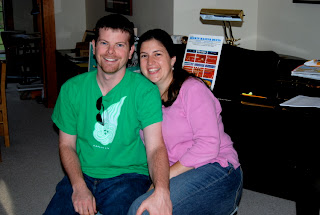 ... and of course, myself and Ellen (and Mindy atop the couch on the right)...
... and of course, myself and Ellen (and Mindy atop the couch on the right)...
... followed by good food and conversation at Muldoon's Irish Pub in Wheaton.
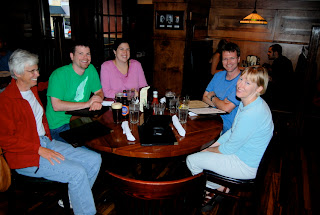
Adventure is not outside man, but within, for you cannot cross the sea by simply staring at the water.
 ... also joined by Steve and Kasia...
... also joined by Steve and Kasia... ... and of course, myself and Ellen (and Mindy atop the couch on the right)...
... and of course, myself and Ellen (and Mindy atop the couch on the right)...


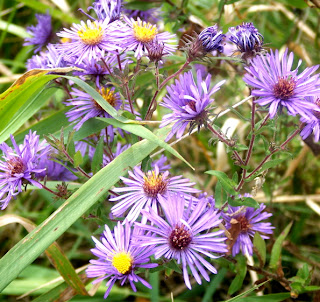




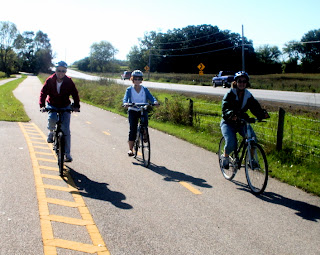






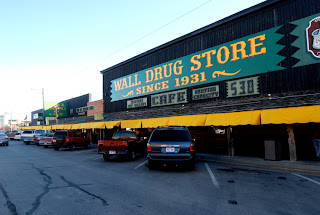




 The Badlands have supported humans for over 11,000 years -- first with mammoth hunters, then nomadic tribes hunting bison, then several Native American peoples (Arikara and Sioux/Lakota), then French fur trappers, soldiers, miners, cattlemen, and homesteaders.
The Badlands have supported humans for over 11,000 years -- first with mammoth hunters, then nomadic tribes hunting bison, then several Native American peoples (Arikara and Sioux/Lakota), then French fur trappers, soldiers, miners, cattlemen, and homesteaders.



 It serves as the home for their basketball team, named (of course) "The Kernals." As seen in this photo, the interior walls up near the ceiling are also decorated with corn murals depicting various scenes.
It serves as the home for their basketball team, named (of course) "The Kernals." As seen in this photo, the interior walls up near the ceiling are also decorated with corn murals depicting various scenes. The exterior decorations are completely stripped down and new murals are created each year. The murals are designed by local artists, and new materials are applied to the building with each mural depicting an important facet of the lifestyle of South Dakota. These murals require thousands of bushels of corn, grain, grasses, wild oats, brome grass, blue grass, rye, straw, and wheat each year. while we were there, workers were creating the final few outside murals, attaching the colorful corn cobs with nail guns. The mural below shows the process used with the areas in blue having white outlines showing what color is to be applied in each area. You can also distinguish the individual ears of corn. (Click on the photo to enlarge it. )
The exterior decorations are completely stripped down and new murals are created each year. The murals are designed by local artists, and new materials are applied to the building with each mural depicting an important facet of the lifestyle of South Dakota. These murals require thousands of bushels of corn, grain, grasses, wild oats, brome grass, blue grass, rye, straw, and wheat each year. while we were there, workers were creating the final few outside murals, attaching the colorful corn cobs with nail guns. The mural below shows the process used with the areas in blue having white outlines showing what color is to be applied in each area. You can also distinguish the individual ears of corn. (Click on the photo to enlarge it. )



 President Theodore Roosevelt proclaimed Devils Tower the nation's first national monument in 1906. Below is a view from the foot of the tower showing the boulder field leading to the base. The top is said to be about 200 feet by 400 feet and the summit is slightly dome shaped and rocky, with native grasses, cactus, and sagebrush. Chipmunks, mice and pack rats and the occasional snake are found on top.
President Theodore Roosevelt proclaimed Devils Tower the nation's first national monument in 1906. Below is a view from the foot of the tower showing the boulder field leading to the base. The top is said to be about 200 feet by 400 feet and the summit is slightly dome shaped and rocky, with native grasses, cactus, and sagebrush. Chipmunks, mice and pack rats and the occasional snake are found on top.

 The average time for two climbers to climb the Durrance Route (the easiest) is between 4-6 hours. It takes about one hour to rappel down, and there have been five climbing fatalities since 1937 (three while rappelling the Tower.) Climbers are not allowed to camp overnight on the Tower.
The average time for two climbers to climb the Durrance Route (the easiest) is between 4-6 hours. It takes about one hour to rappel down, and there have been five climbing fatalities since 1937 (three while rappelling the Tower.) Climbers are not allowed to camp overnight on the Tower.







